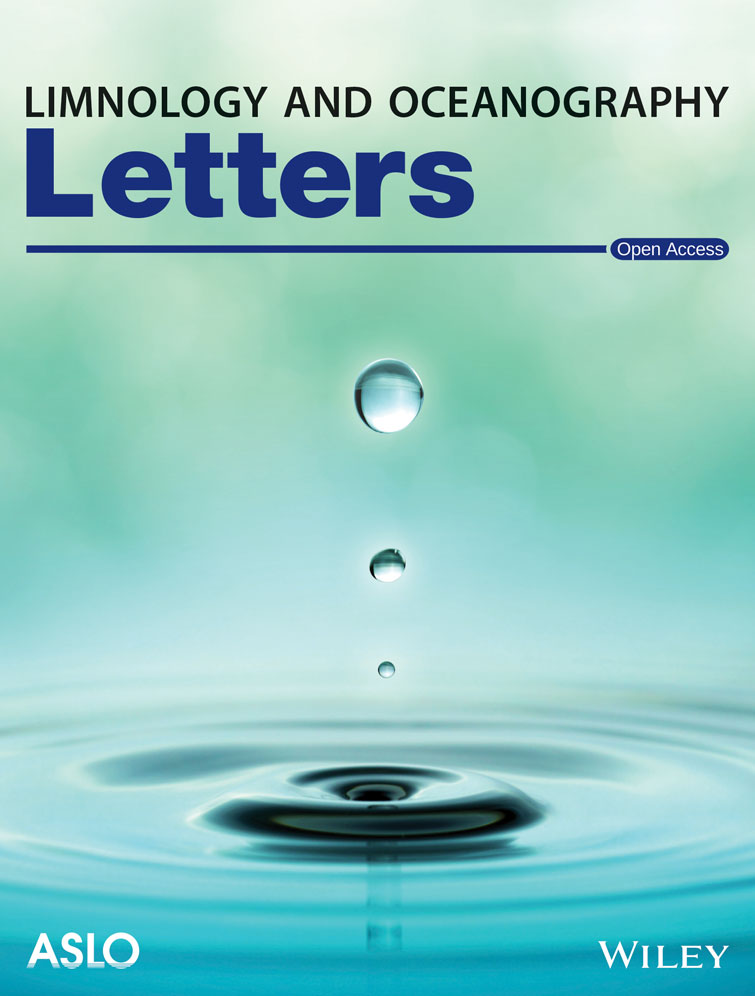道路盐污染使城市雨水池塘向蓝藻主导转变
IF 5
2区 地球科学
Q1 LIMNOLOGY
引用次数: 0
摘要
城市环境面临着一系列压力因素,包括道路盐除冰造成的盐碱化。为了进一步了解道路盐污染如何影响水生生态系统功能,我们调查了加拿大布兰普顿50个雨水池塘的初级生产者。我们发现氯化物浓度降低了(底栖)周围藻的生物量,但对(自由漂浮)浮游植物的总生物量没有明显的影响。然而,影响被潜在的成分变化所掩盖,因为蓝藻通常补偿了其他分类群的下降。不同分类类群(从诊断色素推断)的不同敏感性揭示了潜在的生物指标,其中,浮游和底栖群落的绿藻相对浓度下降最为显著,对绿藻相对浓度的影响在浮游和底栖群落之间存在差异。在我们对受损、营养丰富的城市池塘的研究中,氯浓度是蓝藻优势的主要预测指标,研究结果揭示了淡水资源持续盐碱化的潜在有害生物的新风险。本文章由计算机程序翻译,如有差异,请以英文原文为准。
Road salt pollution shifts urban stormwater ponds toward cyanobacterial dominance
Urban environments contend with an array of stressors, including salinization by deicing road salts. To advance understanding of how road salt pollution affects aquatic ecosystem functioning, we surveyed primary producers in 50 stormwater ponds in Brampton, Canada. We found that chloride concentrations decreased (benthic) periphytic algal biomass but had no detectable effect on the total biomass of (free‐floating) phytoplankton. However, impacts were obscured by underlying compositional shifts, as cyanobacteria generally compensated for declines of other taxa. Varying sensitivities of taxonomic groups (inferred from diagnostic pigments) revealed potential bioindicators, with the proportion of periphytic chromophytes declining most significantly and effects on the relative concentrations of green algae differing between planktonic and benthic communities. As chloride concentrations were a leading predictor of cyanobacterial dominance in our study of impaired, nutrient‐rich, urban ponds, findings reveal an emerging risk of potentially harmful organisms from the ongoing salinization of freshwater resources.
求助全文
通过发布文献求助,成功后即可免费获取论文全文。
去求助
来源期刊

Limnology and Oceanography Letters
Multiple-
CiteScore
10.00
自引率
3.80%
发文量
63
审稿时长
25 weeks
期刊介绍:
Limnology and Oceanography Letters (LO-Letters) serves as a platform for communicating the latest innovative and trend-setting research in the aquatic sciences. Manuscripts submitted to LO-Letters are expected to present high-impact, cutting-edge results, discoveries, or conceptual developments across all areas of limnology and oceanography, including their integration. Selection criteria for manuscripts include their broad relevance to the field, strong empirical and conceptual foundations, succinct and elegant conclusions, and potential to advance knowledge in aquatic sciences.
 求助内容:
求助内容: 应助结果提醒方式:
应助结果提醒方式:


